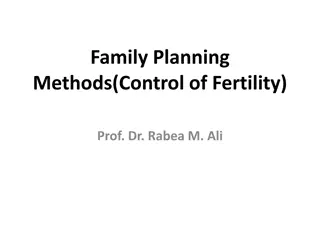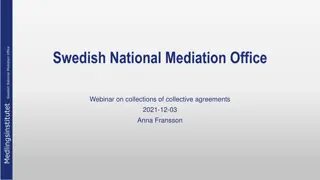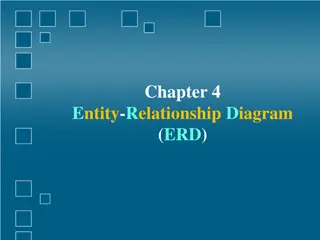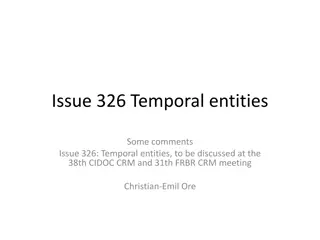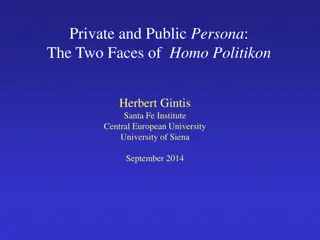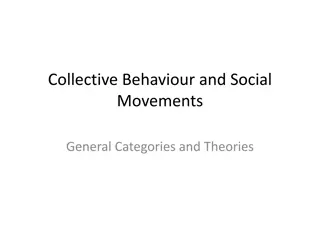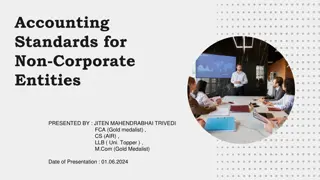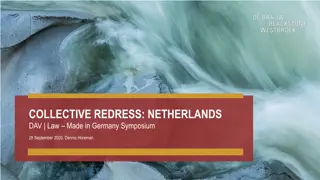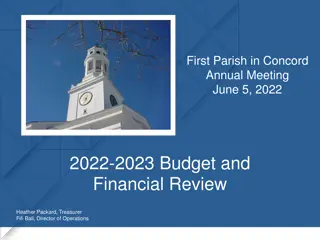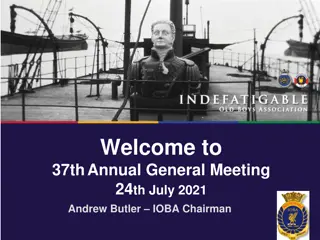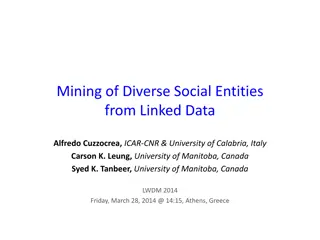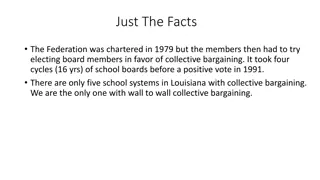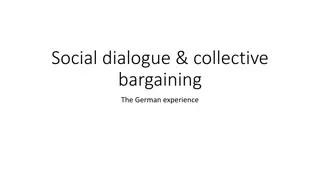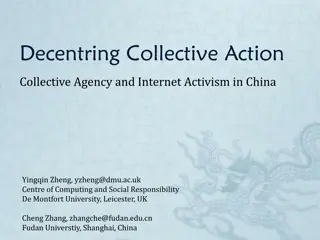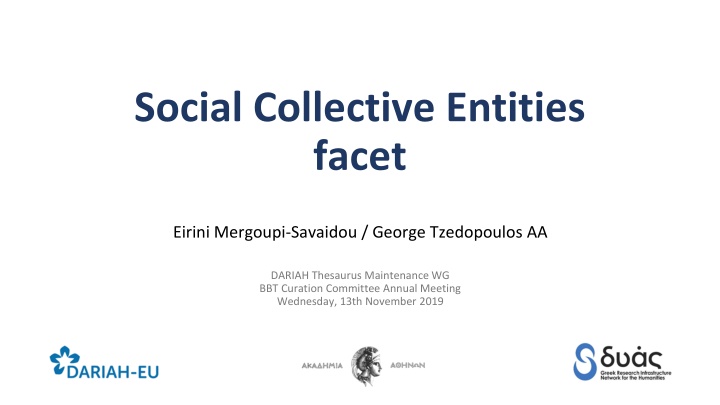
Social Collective Entities and Organizations in BBT Meeting Discussion
Explore the discussions and decisions made during the BBT meeting regarding the definition and hierarchy of Social Collective Entities and Organizations. Learn how to enhance inclusivity and historical perspective in managing collective behavior within these entities.
Download Presentation

Please find below an Image/Link to download the presentation.
The content on the website is provided AS IS for your information and personal use only. It may not be sold, licensed, or shared on other websites without obtaining consent from the author. If you encounter any issues during the download, it is possible that the publisher has removed the file from their server.
You are allowed to download the files provided on this website for personal or commercial use, subject to the condition that they are used lawfully. All files are the property of their respective owners.
The content on the website is provided AS IS for your information and personal use only. It may not be sold, licensed, or shared on other websites without obtaining consent from the author.
E N D
Presentation Transcript
Social Collective Entities facet Eirini Mergoupi-Savaidou / George Tzedopoulos AA DARIAH Thesaurus Maintenance WG BBT Curation Committee Annual Meeting Wednesday, 13th November 2019
Discussion in the BBT so far (a) voting for a new definition of the facet Groups and Collectivities , which was also renamed to Social Collective Entities (b) voting for a new hierarchy Organizations within the facet Social Collective Entities . The final version of its scope note is still pending (c) commitment for a new hierarchy Groups and collectivities within the facet Social Collective Entities . The composition of a scope note for it is still pending
Scopes of the presentation to suggest some additions/ alterations to the definition of the hierarchy Organizations in order to respond to a historical perspective to suggest some alterations of the scope note of the facet Social Collective Entities in order to become more generic and to allow better the inclusion of both Organizations and Groups and Collectivities to suggest a scope note for a new hierarchy that refers to social collective entities without organizational characteristics, named Groups and Collectivities
Hierarchy: Organizations A social unit of people that is structured and managed to meet a need or to pursue collective goals. All organizations have a management structure that determines relationships between the different activities and the members, and subdivides and assigns roles, responsibilities, and authority to carry out different tasks. Organizations are open systems--they affect and are affected by their environment .
Hierarchy: Organizations This term classifies social collective entities that are structured and managed to meet specific needs or to pursue collective goals. The adoption of common beliefs, goals and objectives plus the plans to achieve them on behalf of a number of individuals is what permits classifying this type of social collective entity into organizations. Organizations typically stem from some relevant founding event, whereby the social collective entity they define acquires its identity. As a result, they exhibit organizational properties, which grant them the means to manage their collective behavior. A direct corollary of that is that the actions of an organization can coincide with the actions of a subset of its members, who can act on behalf of the organization as a whole, in the role/capacity that is assigned to them in the context of the organization. These properties stem from a strictly defined requirement of a more or less constant membership. Examples of organizations include, among others, architectural firms, religious orders, churches (institutions), schools (institutions), political parties. NOTE: political organizations incorporating a geographic area and a general population as well as an organized administration (f.i. "states", "kingdoms", "prefectures", etc) are to be subsumed under "Geo-political units" instead .
Hierarchy: Organizations This term classifies social collective entities that are structured and managed to meet specific needs or to pursue collective goals. The adoption of common beliefs, goals and objectives plus the plans to achieve them on behalf of a number of individuals is what permits classifying this type of social collective entity into organizations. Organizations typically stem from some relevant founding event, registered and documented or incorporated within specific narratives of origin, whereby the social collective entity they define acquires its identity and legitimization. As a result, they exhibit organizational properties, which in their turn can change over time in order to adapt to new requirements. These properties grant organizations the means to manage their collective behavior. A direct corollary of that is that the actions of an organization can coincide with the actions of a subset of its members, who can act on behalf of the organization as a whole, in the role/capacity that is assigned to them in the context of the organization. These properties stem from a strictly defined requirement of a more or less constant membership. Examples of organizations include, among others, architectural firms, religious orders, churches (institutions), schools (institutions), political parties. Note: political organizations incorporating a geographic area and a general population as well as an organized administration (f.i. "states", "kingdoms", "prefectures", etc) are to be subsumed under "Geo- political units" instead .
Facet: Social Collective Entities Any number of people jointly forming a unit or being regarded as one. The resulting units come into being through the joint actions of at least two people either because there is a continuity of action among them or because they are bound by some social *and/or* institutionalized relation. The types of relations constituting the unity of a social collective entity covers a wide range of social aspects (economic, religious, athletic, political, national etc.). The said relations may be strong and institutionalized (eg. the relations among the members of a military unit or a married couple), institutionalized, yet flexible (as in the context of a commercial company), or completely informal (in the case of a spontaneous discussion group on the road). Social collective entities may emerge on the basis of shared traditions and objectives serving as an integrating factor that brings together the individuals identifying themselves as belonging to a certain group. This integrative function of social relations is best illustrated in the case of nations, organized religious groups, social minorities or amateur communities. NOTE: The types of relations constituting the unity of a social collective entity are typically not solely based on properties exhibited by each member individually. For the most part, these properties can be perceived as unifying characteristics by the members of the social collective entity themselves --properties such as race, language, religion, social stratification etc. not only serve as a means to group individuals, but are also viewed/construed as unifying factors by the members forming the social collective entity . SUGGESTION: Any number of people jointly forming a unit or being regarded as one. The resulting units come into being through the joint actions and/or common social conditions of at least two people bound by some social relation, formal or informal, and are reproduced through some continuity of action or social situation. The types of relations constituting the unity of a social collective entity covers the whole range of social and cultural aspects .
Hierarchy: Groups and Collectivities This term classifies units of people which are sustained through social relations that may be strong and institutionalized (eg. the relations among a married couple), strong yet non-institutionalized (e.g. the relations among members of social elites), or completely informal (in the case of a spontaneous discussion group on the road). In any case, those relations depend on and are reproduced through social interaction and, even though they may be subject to informal regulatory codes of behaviour, they are not defined by organizational procedures, management structures and role assignments for meeting specific needs or pursuing collective goals . Groups and collectivities: social classes , professional groups , castes , ethnic and national groups , minorities , kinship groups , religious communities . Organizations: trade unions , guilds , scientific societies , terrorist organizations , secret societies , revolutionary organizations




